
Cooking Tips and Tricks. Through my years of cooking, watching others cook, and also reading tons of cookbooks, I’ve come up with a list of favorite cooking tips and tricks.

Here’s my list:
Get at least one good kitchen knife. I use Wusthof brand yet there are many others available on the market. Also, keep your knife sharpened so it doesn’t slip and cause an accident.

When you buy fresh herbs, wash and chop half the herbs (stems removed) that you purchased. Put them into a small freezer-safe container such as Tupperware or Rubbermaid, or in an ice tray, and add some vegetable or olive oil to cover the herbs. Freeze in your freezer. When needed, pop out a spoonful or “cube” of frozen herbs. The herbs will still taste fresh! Use in cooking or salad dressings. I do the same with the abundance of herbs from my garden prior to the last frost.
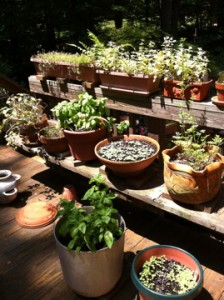
You can also “dry” the herbs. Rinse and clean them, remove the leaves from the stems, and discard the stems. Let the herb leaves “dry” until “crispy” and then chop finely and store in sealed glass jars or plastic containers.
Grow a few different herbs on a sunny windowsill during the winter and you’ll have fresh herbs all season long! Then move the herb plants outside in Spring after the last frost, let them enjoy the summer, and then move them inside in the fall….and repeat!
To use an abundance of basil at the end of the season, make your favorite pesto and freeze it. Additionally you can make pesto from other herbs and even Spring Mix! Divide the pesto into small containers to use throughout the winter. Cover the pesto with some vegetable or olive oil and press a bit of plastic wrap into the oil prior to putting the top on the container. Your pesto will remain bright green and you will have a taste of summer throughout the winter.
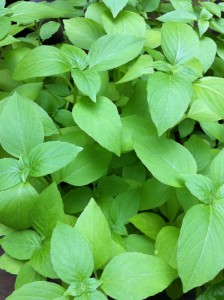
Add a tablespoon of honey or agave syrup or maple syrup to a mustardy vinegar and oil dressing recipe for a tasty sweet-and-sour outcome.
Add a teaspoon of powdered ginger to your spicy meat and bean chili recipes. The ginger is believed to calm the gastrointestinal effects of the beans and spices!
To keep lots of bubbles in champagne or sparkling wine after opening, put a metal spoon, handle-side-down, into the open neck of the bottle, and keep the bottle chilled. Only remove the spoon to pour more champagne! Then put it back. It’s unbelievable how well this tip works!

If you buy avocados in bulk, and can’t eat them all at once, put them in the refrigerator before they are ripe. They will ripen in a slower manner, giving you time to enjoy them at your leisure!
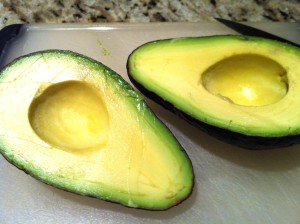
To use an abundance of tomatoes at the end of summer, or haven’t used some tomatoes that are slightly past-their-prime, just roast them! Put them on a foil-lined pan with a toss of olive oil and sprinkling of salt and pepper. Roast at 300 degrees until they are soft and slightly caramelized. You can even freeze them in a container with a covering of olive oil for that “summer tomato” taste in the winter. Roasted tomatoes are a staple in a number of my recipes.
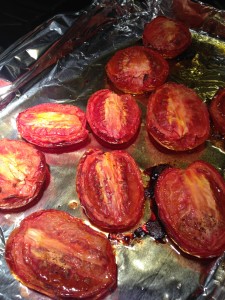
When you purchase fresh fruits, freeze some for future use in smoothies or other dishes. I like to buy organic blueberries, raspberries, and strawberries on sale and then wash, dry, and freeze them whole to add to pancakes. Whole bananas can be peeled, wrapped in plastic, and then frozen. The bananas will become creamy and wonderful and can be eaten whole or popped into the blender as part of a smoothie. I’ve frozen cubed fresh pineapple, mango, papaya, and even apples with great results.
If you freeze a lot of foods for later use, get yourself a FoodSaver which will allow you to vacuum-seal your food items for the freezer. I love mine, and use it often.
To extend the life of nuts such as pine nuts, pecans, peanuts, pistachios, walnuts, etc., you can freeze them. I generally buy nuts in bulk and then bring them home and freeze them right away. Be sure to label each package with the date you freeze the nuts. The nuts will keep up to 6 months longer in the freezer.

Spruce up your tossed green salads with a small handful of dried cranberries or other dried fruits, chopped or whole nuts, shredded cheese or cheese crumbles, diced fresh fruits, chopped fresh herbs, or crushed tortilla chips or pretzels for some crunch.
Hard cheeses such as Parmesan or Grana Padano can be shredded or grated and frozen. We use shredded cheeses in salads and on pastas and pizzas and find that they don’t last a long time, especially bought in bulk and just left in the refrigerator. The freezer will extend their use. However, don’t freeze very soft cheeses such as goat or fresh mozzarella balls. Their textures and tastes will change, and not for the better.
Store fresh softer cheeses in the refrigerator lightly wrapped in wax paper instead of plastic wrap. Store blue cheeses in aluminum foil with the foil’s dull side facing the cheese. The cheeses will keep better and retain their just-cut flavors. Store fresh mozzarella balls and ricotta and cottage cheeses in their original containers.

Freeze butter wrapped in its original packaging when bought on sale or in bulk for later use in cooking.
Freeze fresh bread for later use. Tightly wrap baguettes, loaves, and buns in plastic wrap, then put into Ziploc bags or their original bags (minus the additional crumbs) and place in the freezer. Take the bread out of the freezer about 2 hours prior to use. The bread tastes best when heated in the oven in aluminum foil (remove the plastic wrap first). You won’t know that the bread wasn’t really baked that day! I usually keep the original bread wrappers and use them as an outer covering for easy identification.
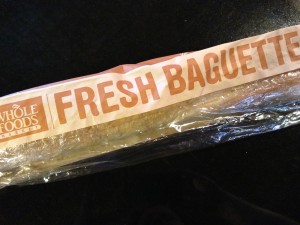
When making the best scrambled eggs, cook them over very low heat with some added butter for very soft curds. They will be velvety and elegant for your weekend breakfast or brunch. Add some smoked salmon and creme fraiche for further decadence.

One of my “mottos” is if you can make it better or healthier, don’t buy it. On the flipside, if someone else makes it better, buy it and save yourself the time. I tend to purchase pre-made mayonnaise such as Hellmanns or the new eggless Just Mayo for everyday use, however, I always make my own salad dressings and vinaigrettes.
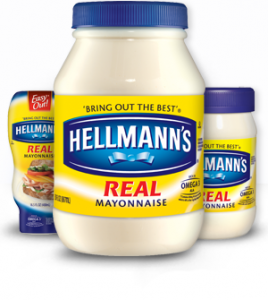
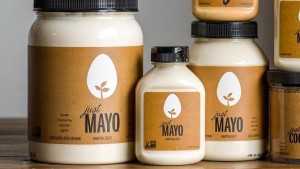
I’m not a great baker of breads, so I will purchase breads, and freeze them as noted above. Recently, I bought whole grains in bulk and pulverized them with my Vitamix blender to make whole grain flour. It sure tasted fresh and may become a regular option for me.
Use a French coffee press to make tea. Just add a teaspoon of tea per teacup to the coffee press, and fill with almost boiling water. Let the tea steep for a few minutes, and then place the press portion into the coffee press, and press down! I have a few small coffee presses that I use to make freshly brewed tea in the mornings. The larger one is used on the weekends when I want more than one or two cups of tea for breakfast.
The coffee press can also be used to froth milk for cappuccino beverages, although you need to ensure that no remaining tea leaves are stuck in the press itself! Just heat hot milk in a non-metallic coffee press container (without the press) and then plunge the press up and down until the milk foams! Spoon it out onto your hot beverage and enjoy!
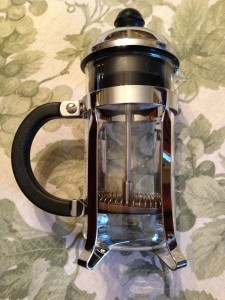
My husband notes that you should always let your cooked meat rest for a bit before you carve or cut it into pieces. Resting will help the meat to retain its juice and keep it tender.

Bake on days with lower humidity and your cakes won’t fall! Same with making pancakes and waffles. The finished products will rise better.
I try to make the majority of my home-cooked meals from scratch. You just don’t know for sure what’s really in food — even pre-made or pre-processed items sold at your local “healthy” grocery stores.
What are YOUR favorite cooking tips and tricks? Leave a comment and let me know!
www.afoodloversdelight.com (Copyright Adroit Ideals 2013)



Tell me what you think!